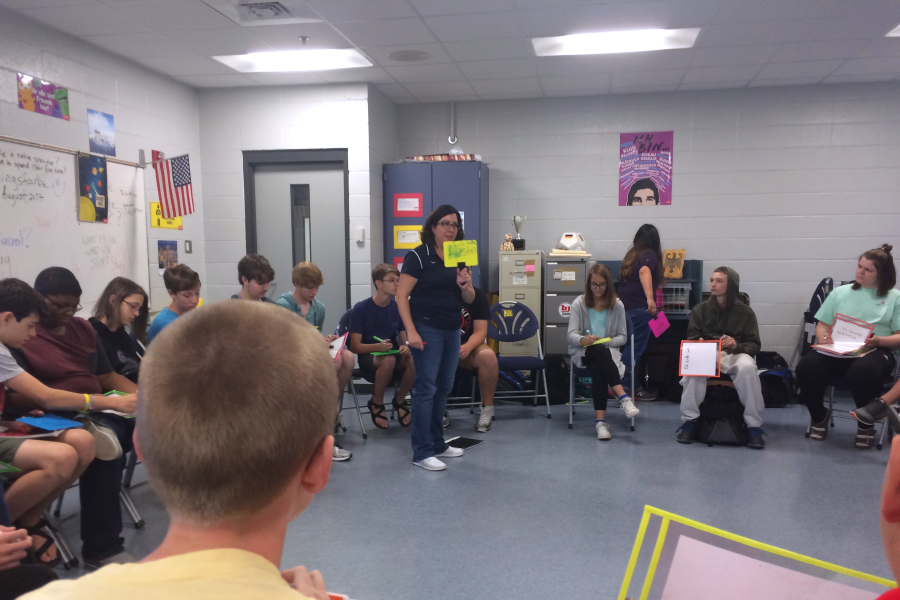Bilingualism in Madison City Schools
Frau Bruni’s German 1 students play a question and answer game based on activities they have learned.
August 30, 2017
Throughout the Madison City Schools District, there is no doubt the primary focus of the staff and Board of Education is to ensure students are adequately prepared for global success, and recently because of this, the realm of Foreign Languages has brought forth new opportunities for students all throughout Madison and beyond to explore growth and success.
One of many plans continued by Superintendent Robby Parker is to promote bilingualism in the schools by graduation. He hopes the inclusion of a second language will allow students more opportunities in the future and to grow more efficiently past secondary schooling.
His commitment to the foreign language program is vastly evident, and stated, “[Another] way that will help prepare our kids even better than they are now is by ensuring all of our kids have a level of fluency in a second language by graduation.”
He has continued the importance of bilingualism by including Spanish in all elementary schools across the district and allowing middle school students to register for Spanish or French classes to allow literacy up to Advanced Placement (AP) classes in secondary schools.
When asked about the benefits in future success from taking a second language, National Board Certified World Language teacher Lesa Clough said that “[taking a foreign language can allow] future employment options, insight on global economies, better critical thinking skills–the list goes on and on.”
According to research studies, she is correct. Many benefits are awarded to bilingual participants that are not as easily obtained for those who are not.
A 2012 study conducted by Northwestern University suggested that bilingualism can improve one’s memory and focus and additionally highlighting important information in the brain.
Other studies have suggested that it can improve native language skills, stimulate an open mind, allow multi- and bilinguals to make better decisions, improve brain growth, and much more.
“[Taking a language] creates more cultural understanding, empathy, and diversity, which is so important today,” Clough commented.
The School District’s notable contributions to the foreign language department do not go unnoticed. Approximately 75 percent of the Madison City School’s high school population is currently taking two or more years of a foreign language, and the system expects that number to increase with the addition of a language curriculum being implemented in more schools.
Some students, however, are not fond of the way schools teach it. Senior Grey Vandeberg mentioned, “My learning style is more centered around learning at my own pace, on my own schedule.” Adding, “With something as important as a foreign language, I feel being confined to due dates would not aid in my comprehension of a language.”
Although some students might disagree with taking a foreign language at school, there is indeed notable evidence to show that Madison City might have made a good decision in implementing foreign languages in our schools.
Seeing that more than 56% of the world’s population is bilingual or multilingual, using the learned traits of a second language certainly will not be difficult for anyone in Madison City. It might, however, take quite a bit more time to become a polyglot in one’s desired language, but starting early can help progress and expedite the process.


